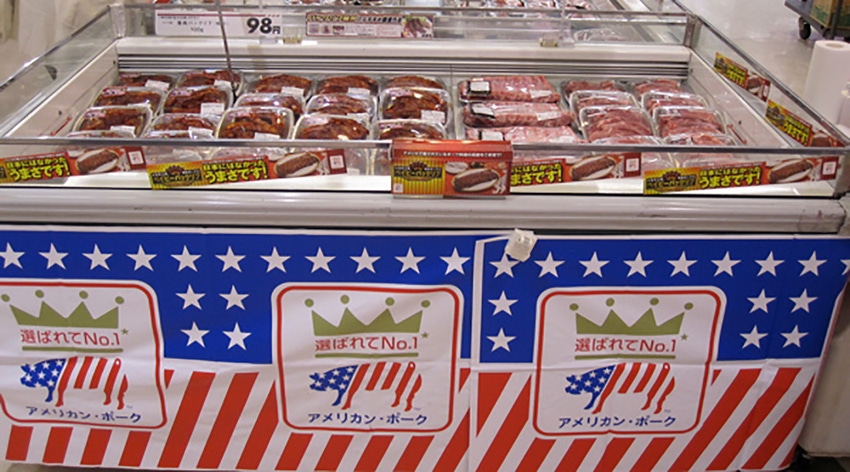ERS: Pork exports to Japan are estimated to increase as a result of trade agreements; United States has the highest estimated gains.

Researchers with the USDA Economic Research Service are forecasting Japan's pork imports to increase between 3.6 and 13.9% by 2028 due to the country's trade agreements in place. Based upon the Global Trade Analysis Project model, the researchers estimate this uptick could lead to an additional $281 million of U.S. pork exports being shipped to Japan.
Japan currently produces 50% of the pork that it consumes through domestic production, however ERS points out that could soon change as domestic pork producers face increased competition from foreign competitors, putting downward pressure on Japan's pork industry and forcing producers out of the business. In the next six years, Japan's pork production is predicted to drop between 4.2 and 11.8%.
Authors Eric Davis, Ethan Sabala, Dylan Russell and Jayson Beckman note that changes in Japan's recent trade agreements could boost the competitiveness of trade partners in the country's pork market. Japan has ratified trade agreements with the United States, European Union, United Kingdom and Comprehensive as well as the Progressive Agreement for Trans-Pacific Partnership in place with Australia, Brunei, Canada, Chile, Malaysia, Mexico, New Zealand, Peru, Singapore and Vietnam.
"This potential boost in foreign competitiveness could result in lower domestic production, higher import volumes, and thus increased availability of lower-cost foreign pork for Japanese consumers."
The researchers note these changes can be seen in the following model estimates that assume the gate price system imposes a burden equal to a 10% ad valorem tariff. The estimated changes in value in 2028, relative to the 2018 baseline, are:
By 2028, Japan's pork imports would increase by 3.6% for carcasses and half-carcasses, 12.2% for unprocessed meat cuts, and 13.9% for processed pork products.
Japan's domestic production would decrease by 4.2, 11.6 and 11.8% for carcasses and half-carcasses, unprocessed meat cuts and processed pork products, respectively.
Total pork exports to Japan would increase in value (in millions) by $281.0, $244.5, $232.8 and $0.21 for the United States, EU, CPTPP and UK, respectively.
Most of these export gains to Japan would come from the unprocessed pork sector, with gains of $168.6, $201.3, $210.5 and $0.21 million for the United States, EU, CPTPP and UK, respectively.
The remainder of the gains would primarily be from the processed pork sector, with an additional $112.3, $43.1 and $22.3 million in exports from the United States, EU and CPTPP, respectively. The UK does not currently compete in this sector.
The carcass and half-carcass sector is extremely small, and export increases in this sector would only have a marginal impact on the total pork exports of each country.
Societal well-being of the United States, CPTP, and EU would increase by $59.3 million, $32.8 million and $17.8 million, respectively.
Additionally, the researchers examined the outlook for U.S. pork exports — if the U.S.-Japan Trade Agreement did not exist and the United States was subject to Japan's World Trade Organization gate price tariff system.
"In this hypothetical scenario, results indicate that the United States would lose a large portion of its market share to Japan's other trade agreement partners, with the 2028 U.S. market share falling from 34 to 23%. The total value of U.S. pork exports to Japan also would decline by $385.9 million from 2018 levels."
About the Author(s)
You May Also Like





